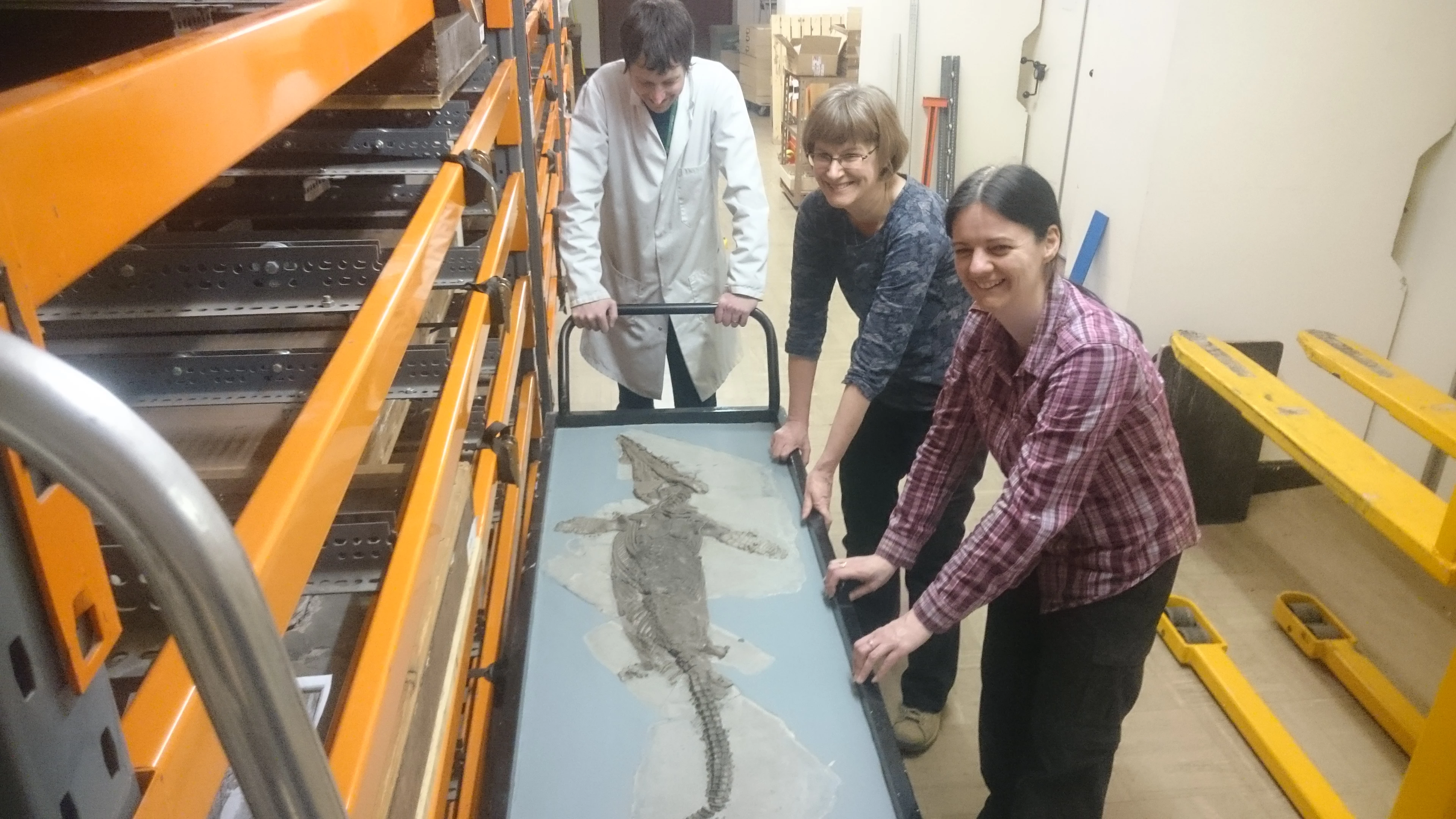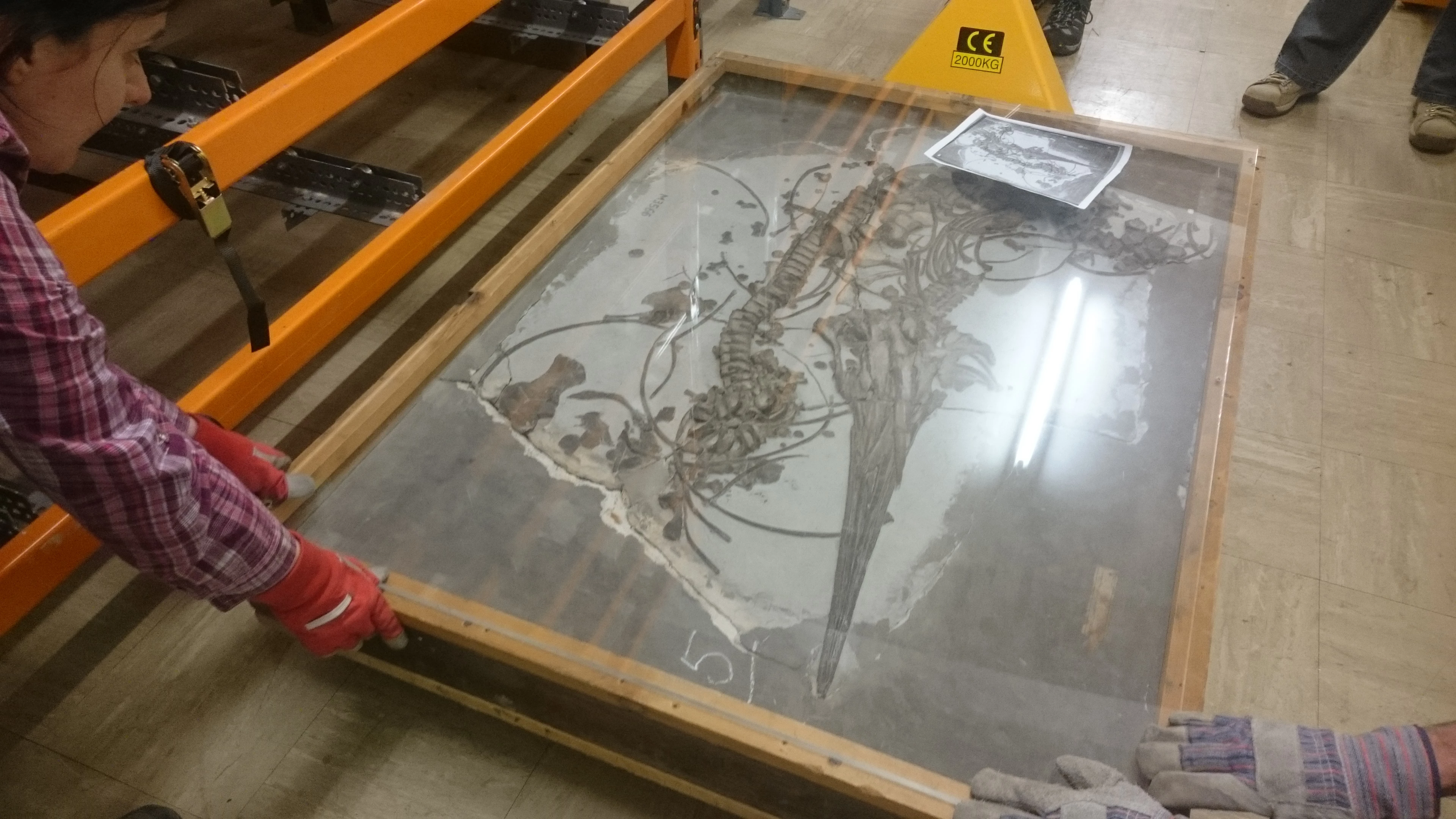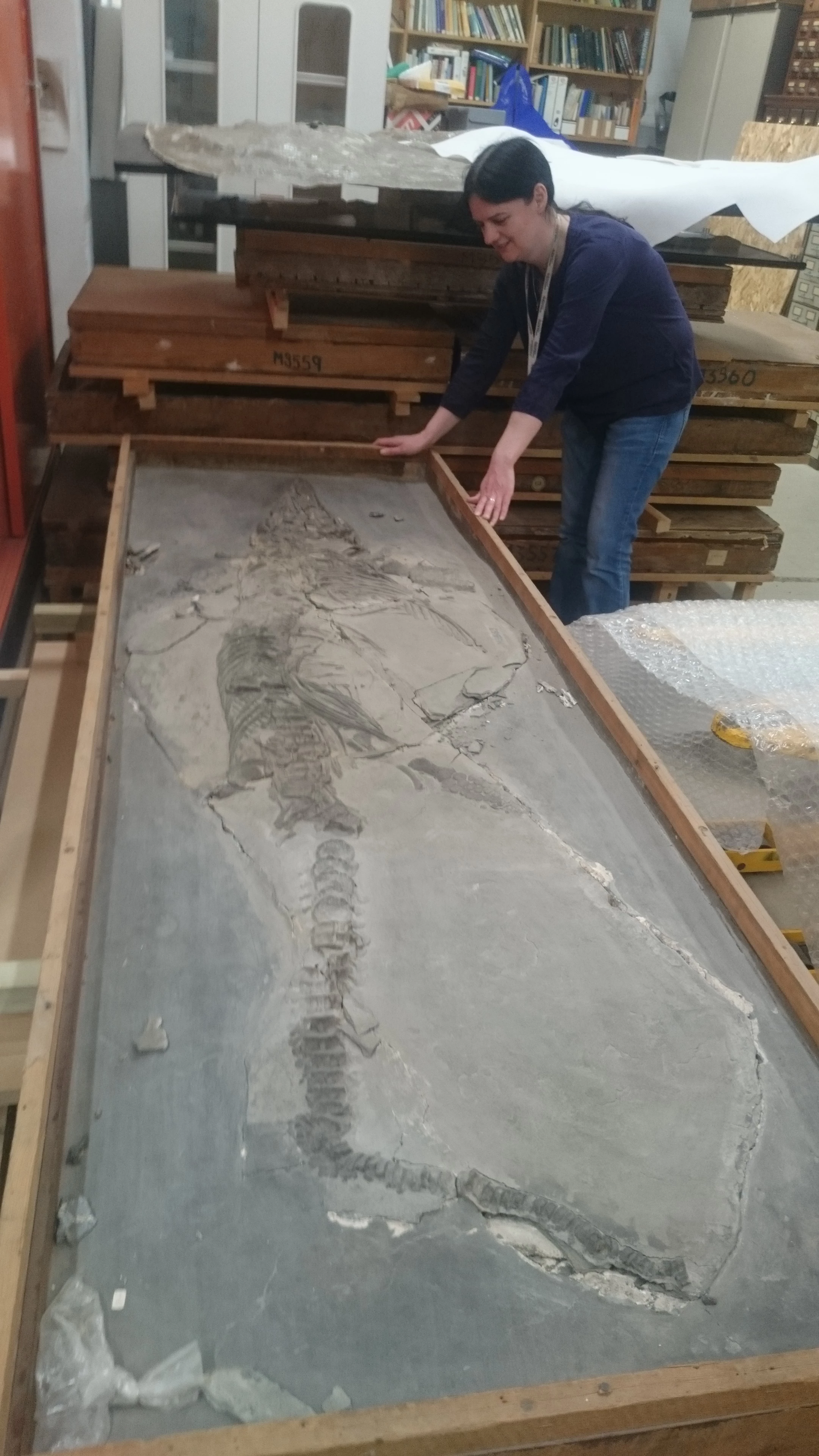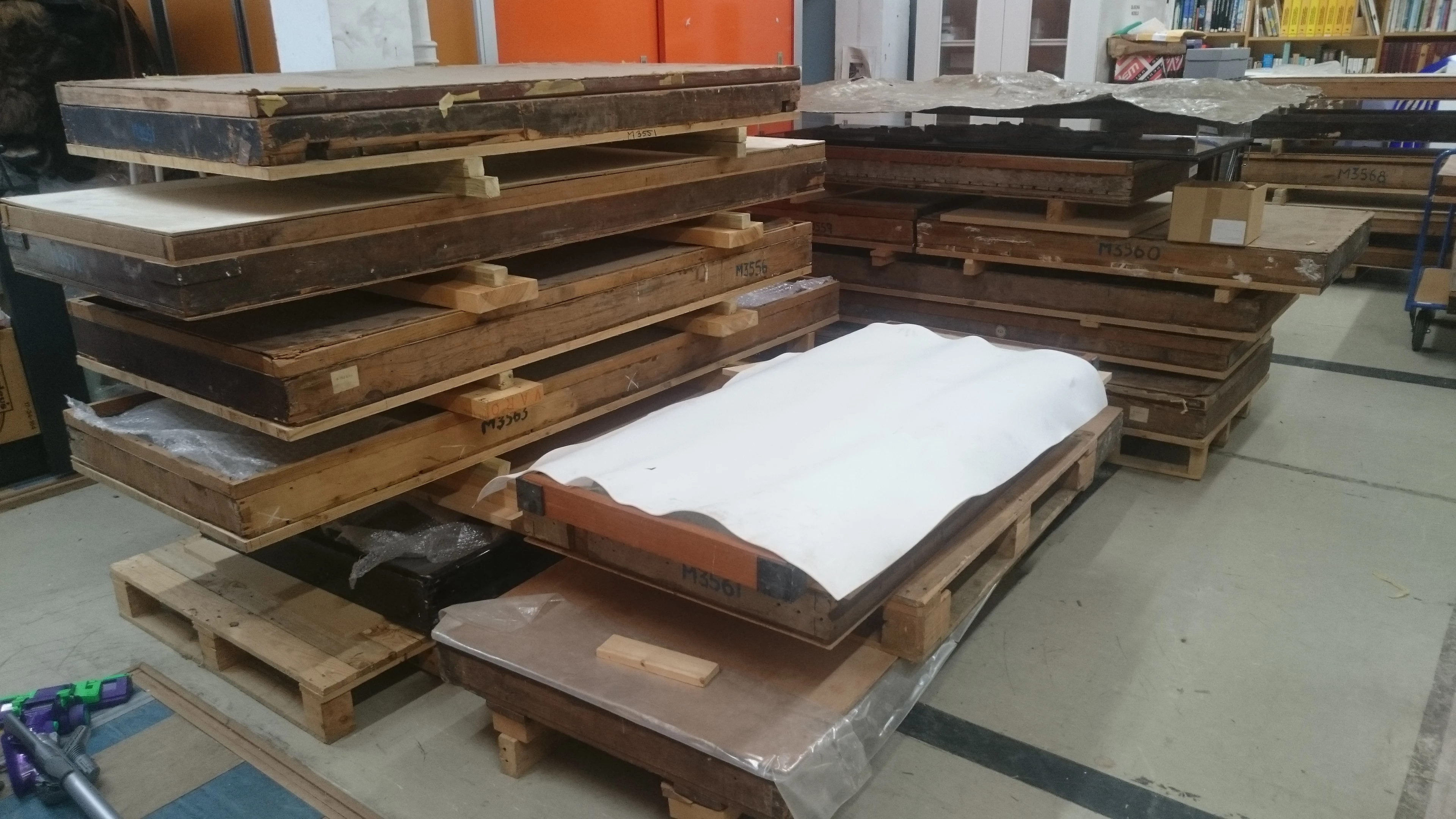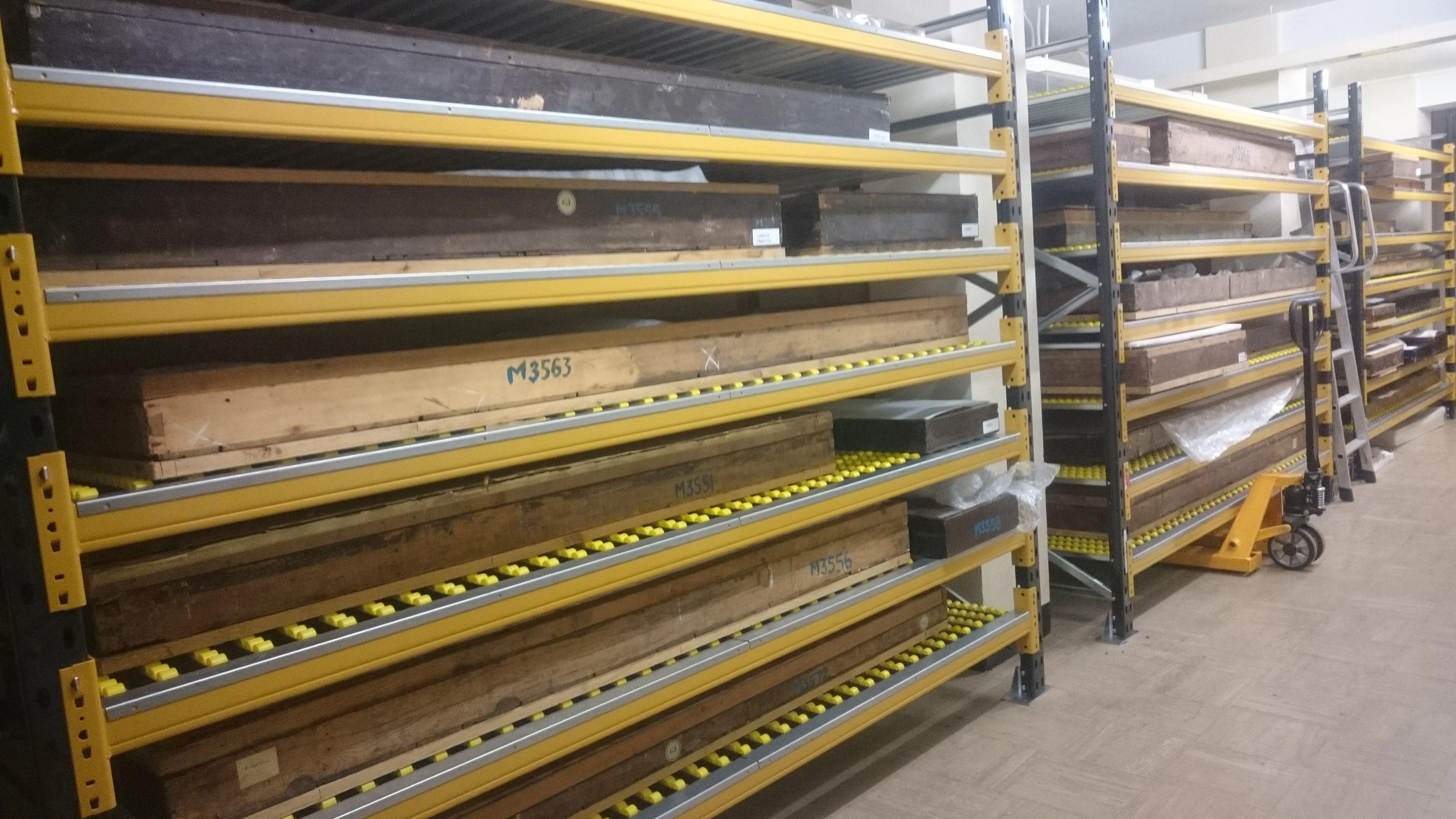Collection Care Challenges - Storing the Big Marine Fossils
, 28 June 2017
Storing and accessing many of the collections housed in the museum can be quite a challenge. Within the natural sciences we have over 4 million objects and specimens that exist in a huge range of materials, sizes and shapes. These range from frozen DNA samples to the full skeleton of a humpback whale!
In a recent project we had to consider how to improve the storage of our collection of large marine fossils of fabulous Ichthyosaurs and Plesiosaurs. This is a highly important collection but due to the large size, weight and nature of the specimens they are very difficult to store and access easily.
Over 30 years ago the geology team had come up with a clever solution using metal runners mounted on a commercially available heavy duty racking system. However over time this had started to become distorted, and accessing the fossils was becoming hazardous to both museum staff and the fossils themselves. We needed an effective long term replacement…
Fortunately the commercial world now has many more options available and we thus went through the process of obtaining quotes and potential design solutions to the storage of the fossils which ranged from refurbishing the existing racking to using heavy duty pull out shelfs.
In the end we went with the idea of adapting the roller beds used to move pallets along racking systems. Long span shelves covered with these rollers would provide a large surface area to spread loads, and enable easy movement of the fossils on and off the racking via a loading platform or pallet.
With a decision made, the challenge was now to safely remove the fossils off the existing racking, and to find somewhere where they could be temporarily stored – finding space is a huge challenge in an overstuffed museum like ours!
With careful planning space was found and it was time to move the fossils. None of the really big ones had been moved in a very long time so we weren’t sure of how they could be handled or the actual weight of the fossils. So to get started we chose to move one of the biggest and heaviest (i.e. most awkward) specimens, acquired a range of pallet trucks, lifts and dolley skates, and worked through the logistics of how to move this unwieldy specimen safely….
This first fossil was not easy to move and highlighted the key issues we faced in the relocation process. The second one went better, and by the third we had an efficient system going that minimised handling and lifting, reducing risks to both staff and our precious fossils! The temporary holding areas also had limited free space, thus how we subsequently stored and stacked the fossils required further creative thinking.
It took a few days, but all the fossils were safely moved. With the old racking cleared it was now a case of bringing in the contractors to replace the old system with our new shiny racking. Unfortunately this stage took longer than planned but eventually all was sorted and it was a case of moving the fossils all over again…. However the experiences of the initial move resulted in a rapid and efficient return of all the fossils to their new storage racking, with the new roller racking proving excellent for moving the fossils on and off the new units.
The result is we now have the collection in a much more accessible state. This will enable better access for both researchers and visitors but also enable us to put into place digitisation and conservation projects to ensure the long term protection of these historic fossils for science and society as a whole. In the end a job well done by an excellent team!


